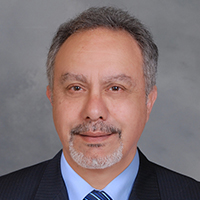Basic Well Test Analysis
Mr. Saad Ibrahim: P. Eng
(3 days) – TBA
Course Objective:
The objective of the Well Test Analysis Workshop is to provide a comprehensive theoretical and practical knowledge of well test analysis techniques. Emphasis will be placed on the practical aspects of well testing and several class examples will be offered; a scientific hand calculator will be required. Further, the use of the analysis results as a reservoir management tool to make decisions related to reservoir development and well completion will be illustrated through actual case studies throughout the workshop. Recent developments in testing of Multi-stage Frac of Horizontal Wells (MFHW’s) and Mini fracing (DFIT) are now included. Also, to offer hands-on experience, attendees are encouraged to bring interesting well test data for analysis and discussion in the class, using commercial software. A detailed course hand-out, which is an excellent reference, will be provided.
Fees: $2100 + (5% GST)

New payment method is available: E-Transfer to accounting@petromgt.com
In the note to the payment enter the name of the course and personal information.
Download Course Description (PDF)
This course is aimed at reservoir, petroleum, and exploitation engineers/technologists. Other discipline staff; such as geophysicists and geologists who are involved in the field development and exploitation will also benefit from this course.
 Mr. Saad Ibrahim, P. Eng, president of Petro Management Group Ltd. He has over 35 years of diversified experience in the oil and gas Industry and known as a worldwide highly recognized engineering consultant and a distinguished instructor. He also completed a post-graduate program with the University of Calgary in Chemical and Petroleum Engineering. The focus of Mr. Ibrahim’s experience lies in the area of Reservoir management, and well test planning/analysis. Mr. Ibrahim is a member of APEGA and SPE.
Mr. Saad Ibrahim, P. Eng, president of Petro Management Group Ltd. He has over 35 years of diversified experience in the oil and gas Industry and known as a worldwide highly recognized engineering consultant and a distinguished instructor. He also completed a post-graduate program with the University of Calgary in Chemical and Petroleum Engineering. The focus of Mr. Ibrahim’s experience lies in the area of Reservoir management, and well test planning/analysis. Mr. Ibrahim is a member of APEGA and SPE.
- Review of the flow equations:
- Equation of state, Darcy and continuity equation
- Common flow geometry
- Dimensionless parameters: definitions and Type Curve use/applications
- Boundary conditions: infinite, Pseudo- steady state and steady state
- Solution of the diffusivity equation: (class problem)
- Build-up test analysis:
- Principle of Superposition
- Horner Plot; average reservoir pressure (MBH) method (class problem)
- Reservoir boundaries and channel analysis
- Wellbore skin factor and partial penetration (class problem)
- Wellbore storage: use of type curves and (class problem)
- Draw-down testing:
- Application and test analysis and equivalent time
- Reservoir Limit Testing (case study – fractured basement)
- Hydraulically fractured wells:
- Fracture characterization (frac. Half-length, conductivity and orientation).
- Use of type curve techniques and fourth-root time plot to evaluate frac. Efficiency
- Mini Fracs; benefits and test interpretations (DFIT) – case studies
- Practical well testing. How to get the most out of well testing
- Prior to testing (Well test objectives, types of tests, test design)
- During the test (monitoring, optimizing test design)
- After the test: operational problems, data quality (pressure, production and fluids) – numerous case studies
- Well test interpretations:
- Flow regime diagnoses using the pressure derivative
- Conventional analysis
- History matching of pressure data and selection of reservoir models
- Case studies
- AER well test requirements: Guide 40 and electronic submission
- Gas well testing:
- P, P2 and Pseudo pressure-time methods
- Gas deliverability testing: single point – Multipoint test (class problem)
- Simplified and L.I.T.
- Water injectivity tests:
- Step rate and Fall-off tests (case study)
- Hall Plot (class problem)
- Well test planning design
- Test equipment
- Flow/Buildup test design (class study)
- Isochronal test design (class problem)
- Reservoir limit test (case study)
- Horizontal well test (case study)
- Review/analyze well tests provided by attendees including using commercial software.
- Closing comments and a question period
